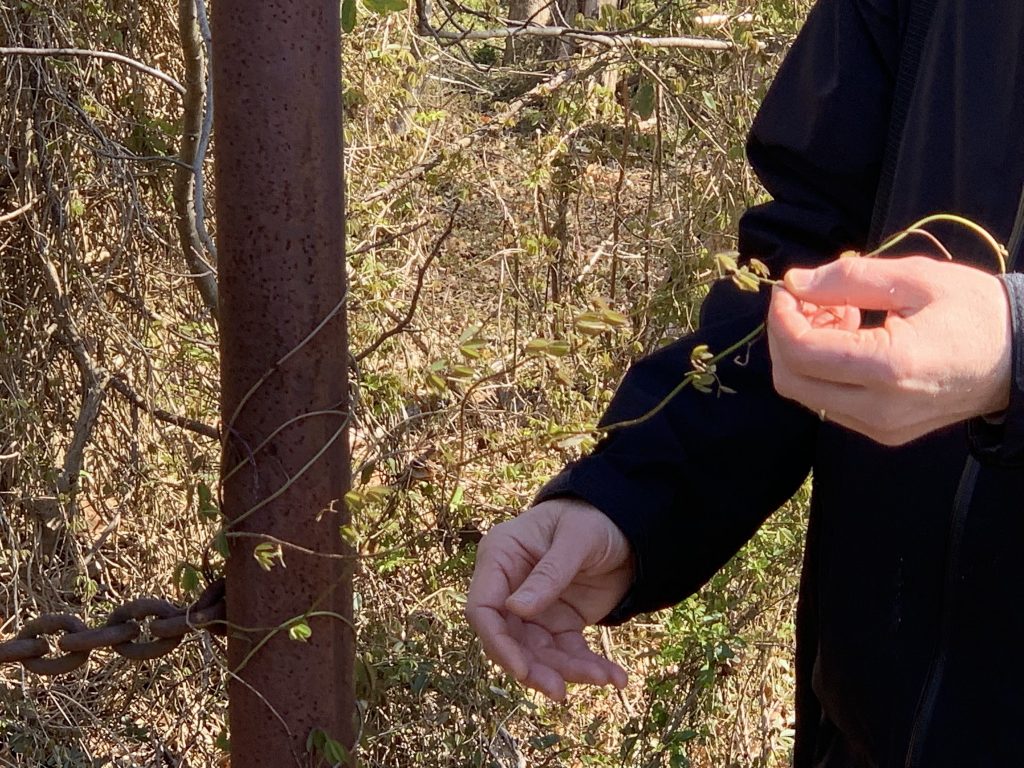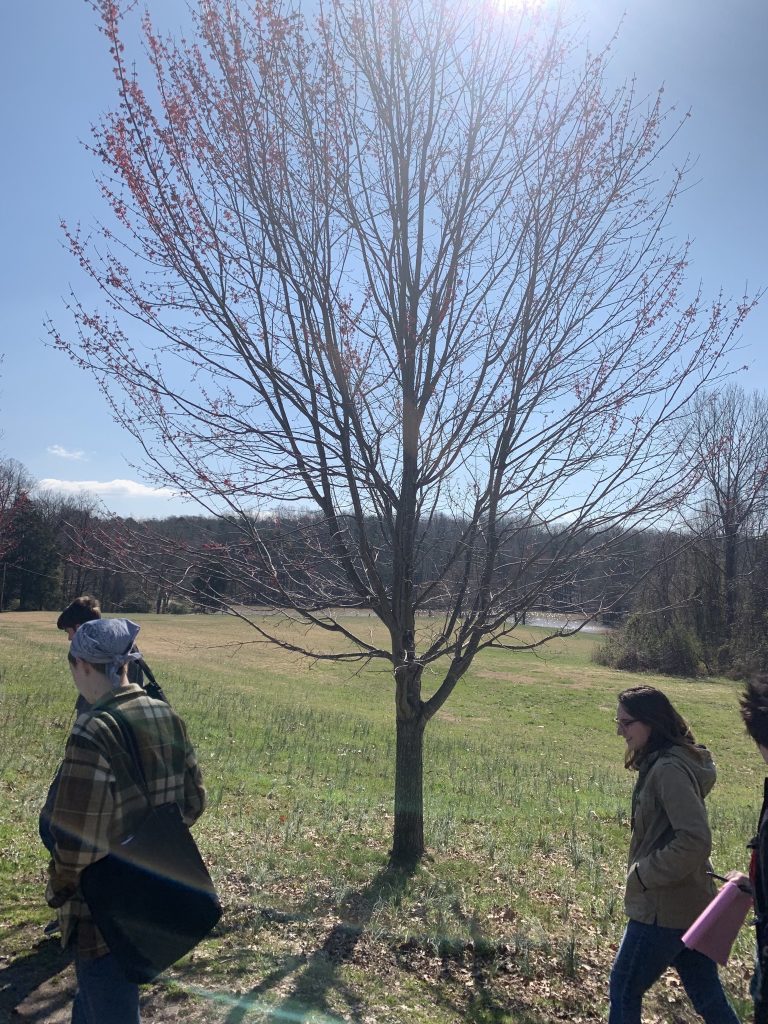“I see a lot of greenery and many trees, and vines… not sure about specifics”
This excerpt from my personal notebook of observations was jotted down during my earlier ventures into the woods. Looking back, I can sense the disconnect between me and the woods. However, my observations compelled me to look beyond scientific labels and bond with the entities themselves. Now, my notebook has species names scribbled down, so this post is going to be me ascribing some value to all these titles and learning more about what species reside in the woods!
Chocolate vine (Akebia quinata)
These woody vines produce chocolate-purple flowers, hence their colloquial name: “chocolate vine”. This is an invasive species that is native to eastern Asia, and was first introduced to the United States in 1845. It doesn’t create any problems in terms of insects or diseases, but its rapid growth is not necessarily desirable.

Red bud tree (Cercis canadensis)
This was one of the first trees to flower in North Carolina and is native to the region. It has heart-shaped foliage that appears after it flowers and tends to be a smaller tree. I didn’t have a chance to see the foliage firsthand on this trip, but I plan on paying this area of the woods another visit soon! This is a very adaptable species that can flourish in a variety of soils once established. It can provide nesting spaces/supplies to birds as well as nectar to bees and other nectar-seeking species.

English Ivy (Hedera helix)
Another woody vine, English ivy is evergreen and invasive. This is yet another very adaptable species residing in the Guilford Woods. Younger plants have heart-shaped leaves with pointed lobes, while more mature plants have more narrow, lance-shaped leaves. These vines have the potential to overtake native species and block out sunlight, which endangers the wellbeing of the plants around them.

Eastern Red Cedar (Juniperus virginiana)
Ah… the cedar tree that isn’t actually a cedar tree, but rather a juniper (as indicated by its scientific name). It produces the small seed cones that are characteristics of all junipers, and they happen to resemble small berries. The tree here, in particular, has a relatively tall, pyramidal shape. This evergreen has bark that shreds off in thin, fibrous strips and its wood can be used to make chests, fence posts, and rails thanks to its rot-resistant properties. Additionally, it also has a relatively high drought resistance.
Red Maple (Acer rubrum)
This deciduous tree ranges in height, but the particular one I saw was on the shorter side. I took note of the tree in the early spring when it was already flowering with small clusters of red flowers. Their wood is commercially known as soft maple and commonly used in furniture and other similar items, where it occasionally replaces hard maple (it is a cheaper alternative). These trees are native to North Carolina and their brilliant colors help indicate changing seasons as well. Younger trees have grey, smooth bark.

While several other species reside in the woods, these were a few that stuck out to me. Now that some background has been established, the next couple posts will be focusing more on my personal perspective and experiences.
See you then!
References:
https://www.invasiveplantatlas.org/subject.html?sub=10090
https://www.thoughtco.com/eastern-redcedar-common-tree-north-america-1342774